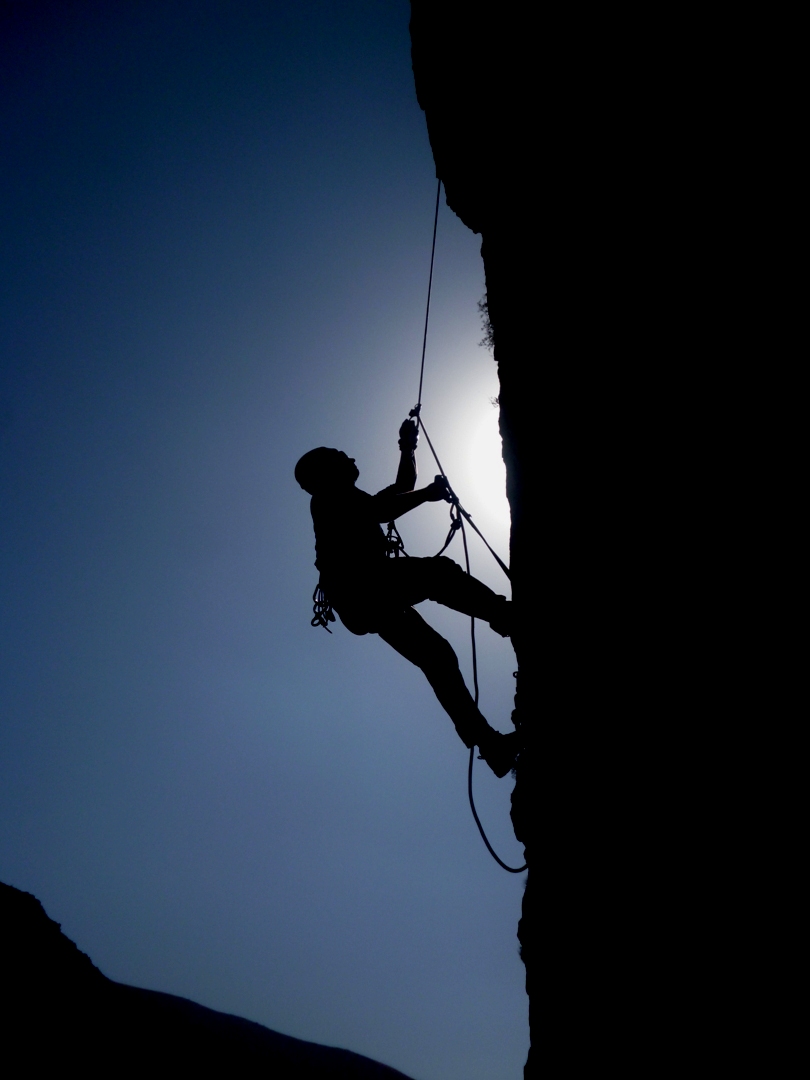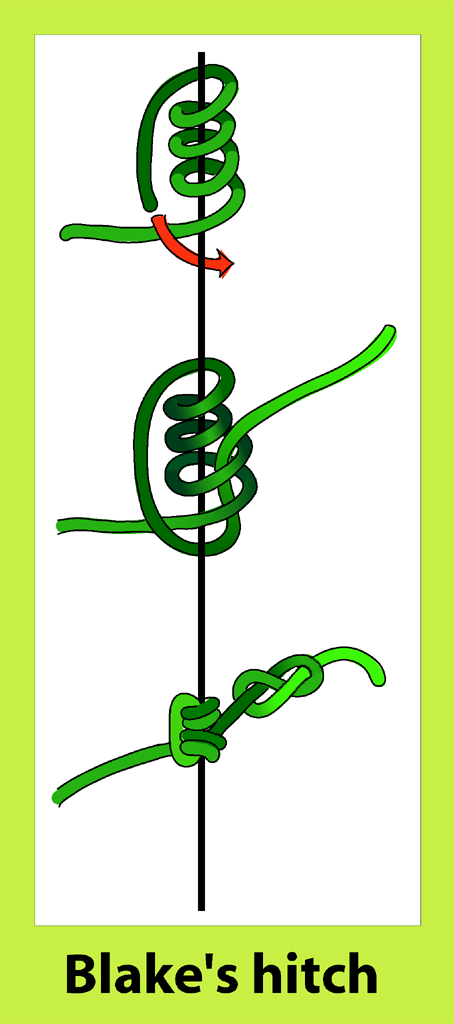|
Beer Knot
A beer knot is a bend used to join tubular webbing. Its most common application is in constructing slings used in rock climbing. Compared with the water knot, it has the advantages of a higher strength, smaller profile, and a cleaner appearance due to the lack of free-hanging tails. However, the beer knot can be more difficult to tie than the water knot, and one of the tails is hidden from view, making safety checks for adequate tail length more difficult. Testing by PMI in 1995 showed that the beer knot preserves about 80% of the strength of the webbing. The beer knot was introduced to the National Speleological Society in the 1980s by Peter Ludwig, from Austria. See also *List of bend knots *List of knots This list of knots includes many alternative names for common knots and lashings. Knot names have evolved over time, and there are many conflicting or confusing naming issues. The overhand knot, for example, is also known as the thumb knot. The ... References ... [...More Info...] [...Related Items...] OR: [Wikipedia] [Google] [Baidu] |
Water Knot
The water knot (also tape knot, ring bend, grass knot, or overhand follow-through) is a knot frequently used in climbing for joining two ends of webbing together, for instance when making a sling. Tying It is tied by forming an overhand knot in one end and then following it with the other end, feeding in the opposite direction. The ends should be left at least long and the knot should be "set" by tightening it with full body weight. The ends can be knotted, taped or lightly sewn to the standing parts to help prevent them from creeping back into the knot.Craig Luebben, ''Knots for Climbers'' (Evergreen, Colorado: Chockstone Press, 1993), 19. Uses The knot can be used for joining flat materials such as leather or tape.John 'Lofty' Wiseman SAS ''Survival Handbook, Revised Edition''; William Morrow Paperbacks (2009) Security Once tied, for additional security each end should be tied in a double overhand stopper knot around the other standing end. Some testing has shown tha ... [...More Info...] [...Related Items...] OR: [Wikipedia] [Google] [Baidu] |
Bend (knot)
This is a list of bends. A bend is a knot used to join two lengths of rope. They are used in a variety of situations, including climbing, sailing, and securing loads. Bend knots are classified based on their ability to be tightened or released, their resistance to slipping, and their strength. Some common types of bend knots include the double fisherman's knot, the double overhand knot, and the double figure-eight knot. Bend knots are important because they allow two ropes to be securely joined together, enabling the combined ropes to support weight or transmit force. It is important to choose the appropriate bend knot for the specific task at hand, as some bend knots may be stronger or more secure than others. The sheet bend is the classic bend. Misuse of reef knot as a bend The common reef knot (square knot) is sometimes mistakenly tied as a bend. When used as a bend rather than a binding knot, the reef knot will capsize under sufficient tension. For this reason, the reef k ... [...More Info...] [...Related Items...] OR: [Wikipedia] [Google] [Baidu] |
Webbing
red, blue and black auto_racing.html"_;"title="nylon_webbing_as_used_in_auto_racing">nylon_webbing_as_used_in_auto_racing_harnesses Webbing_is_a_strong_nylon_webbing_as_used_in_auto_racing_harnesses">auto_racing.html"_;"title="nylon_webbing_as_used_in_auto_racing">nylon_webbing_as_used_in_auto_racing_harnesses Webbing_is_a_strong_Textile">fabric_weaving.html" "title="Textile.html" "title="auto_racing_harnesses.html" ;"title="auto_racing.html" ;"title="nylon webbing as used in auto racing">nylon webbing as used in auto racing harnesses">auto_racing.html" ;"title="nylon webbing as used in auto racing">nylon webbing as used in auto racing harnesses Webbing is a strong Textile">fabric weaving">woven as a flat strip or tube of varying width and fibres, often used in place of rope. It is a versatile component used in climbing, slacklining, furniture manufacturing, automobile safety, auto racing, tow truck, towing, parachuting, military apparel, load securing, and many other fiel ... [...More Info...] [...Related Items...] OR: [Wikipedia] [Google] [Baidu] |
Sling (climbing Equipment)
A sling or runner is an item of climbing equipment consisting of a tied or sewn loop of webbing. These can be wrapped around sections of rock, hitched to other pieces of equipment, or tied directly to a tensioned line using a Prusik style knot. They may be used as anchors, to extend an anchor to reduce rope drag, in anchor equalization, or to climb a rope. Types Slings come both sewn to length and assembled from loose webbing knotted as desired. Common sewn lengths include , , , and . They are available in widths of . Webbing for slings, also known as ''tape'', is sold off the reel, cut to length with a hot knife to prevent fraying, and tied as desired with a water knot. Sewn slings have a rated breaking strength of at least . Short sewn slings are a component of quickdraws, sometimes known as ''dogbones''. Traditionally, slings have been made of nylon. Increasingly, ultra high molecular weight polyethylene sold under the brand names Dyneema, Dynex and Spectra is used. ... [...More Info...] [...Related Items...] OR: [Wikipedia] [Google] [Baidu] |
Rock Climbing
Rock climbing is a sport in which participants climb up, across, or down natural rock formations. The goal is to reach the summit of a formation or the endpoint of a usually pre-defined route without falling. Rock climbing is a physically and mentally demanding sport, one that often tests a climber's strength, endurance, agility and balance along with mental control. Knowledge of proper climbing techniques and the use of specialized climbing equipment is crucial for the safe completion of routes. Because of the wide range and variety of rock formations around the world, rock climbing has been separated into several different styles and sub-disciplines, such as scrambling, bouldering, sport climbing, and trad (traditional) climbing another activity involving the scaling of hills and similar formations, differentiated by the rock climber's sustained use of hands to support their body weight as well as to provide balance. Rock climbing competitions have the objectives of either ... [...More Info...] [...Related Items...] OR: [Wikipedia] [Google] [Baidu] |
Water Knot
The water knot (also tape knot, ring bend, grass knot, or overhand follow-through) is a knot frequently used in climbing for joining two ends of webbing together, for instance when making a sling. Tying It is tied by forming an overhand knot in one end and then following it with the other end, feeding in the opposite direction. The ends should be left at least long and the knot should be "set" by tightening it with full body weight. The ends can be knotted, taped or lightly sewn to the standing parts to help prevent them from creeping back into the knot.Craig Luebben, ''Knots for Climbers'' (Evergreen, Colorado: Chockstone Press, 1993), 19. Uses The knot can be used for joining flat materials such as leather or tape.John 'Lofty' Wiseman SAS ''Survival Handbook, Revised Edition''; William Morrow Paperbacks (2009) Security Once tied, for additional security each end should be tied in a double overhand stopper knot around the other standing end. Some testing has shown tha ... [...More Info...] [...Related Items...] OR: [Wikipedia] [Google] [Baidu] |
National Speleological Society
The National Speleological Society (NSS) is an organization formed in 1941 to advance the exploration, conservation, study, and understanding of caves in the United States. Originally headquartered in Washington D.C., its current offices are in Huntsville, Alabama. The organization engages in the research and scientific study, restoration, exploration, and protection of caves. It has more than 10,000 members in more than 250 grottos. History The Speleological Society of the District of Columbia (SSDC) was formed on May 6, 1939 by Bill Stephenson. In the fall of 1940, the officers of the SSDC drafted a proposed constitution that would transform the SSDC into the National Speleological Society. On January 24, 1941, Stephenson sent a letter to all members of the SSDC announcing that "on January 1 the Society was reorganized as a national organization." The New England Grotto was the first NSS Grotto. It was chartered in 1941 with Clay Perry as president and Ned Anderson as vice pr ... [...More Info...] [...Related Items...] OR: [Wikipedia] [Google] [Baidu] |
List Of Bend Knots
This is a list of bends. A bend is a knot used to join two lengths of rope. They are used in a variety of situations, including climbing, sailing, and securing loads. Bend knots are classified based on their ability to be tightened or released, their resistance to slipping, and their strength. Some common types of bend knots include the double fisherman's knot, the double overhand knot, and the double figure-eight knot. Bend knots are important because they allow two ropes to be securely joined together, enabling the combined ropes to support weight or transmit force. It is important to choose the appropriate bend knot for the specific task at hand, as some bend knots may be stronger or more secure than others. The sheet bend is the classic bend. Misuse of reef knot as a bend The common reef knot (square knot) is sometimes mistakenly tied as a bend. When used as a bend rather than a binding knot, the reef knot will capsize under sufficient tension. For this reason, the reef k ... [...More Info...] [...Related Items...] OR: [Wikipedia] [Google] [Baidu] |
List Of Knots
This list of knots includes many alternative names for common knots and lashings. Knot names have evolved over time, and there are many conflicting or confusing naming issues. The overhand knot, for example, is also known as the thumb knot. The figure-eight knot is also known as the Savoy knot or the Flemish knot. A * Adjustable Bend – can be easily lengthened or shortened * Adjustable Grip Hitch – a simple hitch which may easily be shifted up and down the rope while slack *Albright Special – used to tie two different diameters of line together, for instance to tie monofilament to braid *Alpine Butterfly (also known as Butterfly Loop) – a static loop mostly used by mountain climbers and rappellers for securing a carabiner to static rope. * Alternate Ring Hitching – covering a ring in hitching can prevent damage * Anchor Bend – attaching a rope to a ring or similar termination *Angler's Loop – knot which forms a fixed loop. Useful for fine or slippery line, it is ... [...More Info...] [...Related Items...] OR: [Wikipedia] [Google] [Baidu] |
Climbing Knots
There are many knots used in climbing, rappelling and mountaineering Mountaineering or alpinism, is a set of outdoor activities that involves ascending tall mountains. Mountaineering-related activities include traditional outdoor climbing, skiing, and traversing via ferratas. Indoor climbing, sport climbing, a .... Popular climbing knots are briefly described and depicted in this article. References External links Rock climbing knotsKnots used in climbing and mountaineering Grog's Index of Climbing Knots {{DEFAULTSORT:Glossary Of Knots Common In Climbing Climbing and mountaineering-related lists ... [...More Info...] [...Related Items...] OR: [Wikipedia] [Google] [Baidu] |




